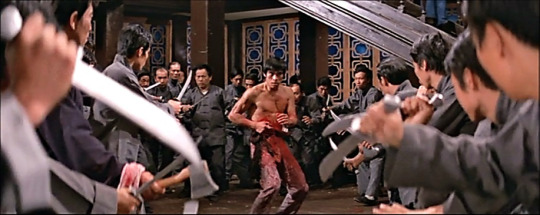#the boxer from shantung
Text

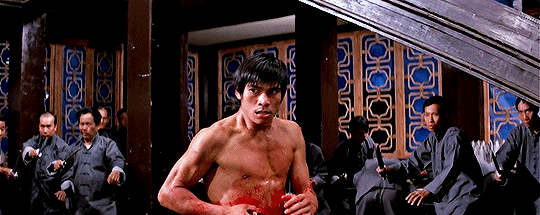
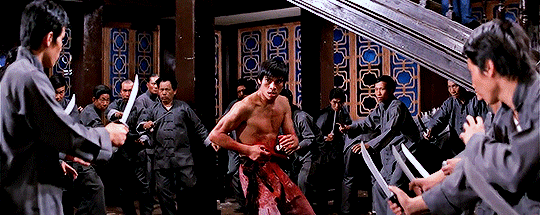
Chen Kuan-Tai in The Boxer from Shantung / 馬永貞 (1972)
#other movie where hero is gutted in a restaurant and has to fight dozens of ppl b4 dying#the boxer from shantung#shaw brothers#kung fu movies#filmedit#chen kuan-tai#hong kong cinema#martial arts cinema#kungfumovieedit#my stuff
18 notes
·
View notes
Text
The Boxer from Shantung on Letterboxd
0 notes
Text
Movie Review | The Nine Demons (Chang, 1984)
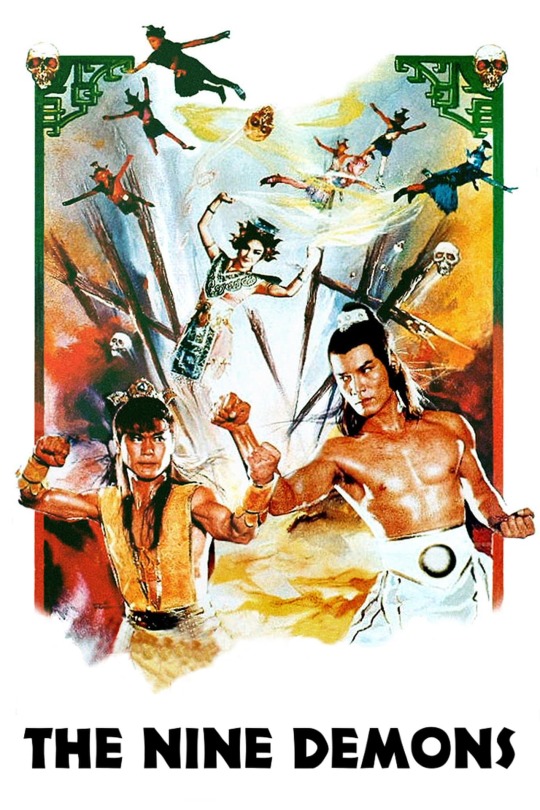
Joey and Gary are best buds and super cool dudes. Unfortunately, some assholes decide it would be cool to stage a coup against Gary's family, leaving Gary for dead and causing Joey to flee. While Joey flees, he ends up stumbling into the underworld and ends up making a deal with the devil. Joey has access to nine demons and gets magic kung fu demon powers, but in exchange he has to keep feeding them blood. Joey agrees and returns to the mortal plane to save Gary and seek his revenge, but like many Faustian bargains, ends up having to do a lot of bad shit to feed the demons. Will Joey become evil for good? Or will he cast off the demons and resume being the good person he once was? I dunno, watch the movie.
This is a late period Chang Cheh film and has the same narrative style as other films he made during that period. Which is to say that characters don't have a lot of interiority and will frequently spout exposition just to keep the plot going. We get enough to establish the reason for the underlying conflict and then proceed to the fight scenes as quickly as possible. When I first encountered his work, while I didn't consider it a weakness per se (I appreciated the narrative efficiency), I also conceded that it was likely just a byproduct of making movies primarily concerned with delivering action sequences. But as I encountered more and more of his earlier films, this approach came into focus as a deliberate narrative choice. Earlier movies like Vengeance and The Boxer from Shantung were deeply felt portrayals of fraternal loyalty, wringing real emotion out of the violence that ensued (and were a precursor to the heroic bloodshed movies of John Woo and the like). In contrast, movies like Five Deadly Venoms and Crippled Avengers deliberately flatten the characterizations and abstract the emotions at play. The effect is like a story told through a tapestry, or by reciting a folktale.
Crippled Avengers has another quality that's very much present here, with their unusually oriented morality. It opens with a character deeply wronged, only for him to be and wrong other characters by maiming them in various ways. Through those scenes the first character is revealed to be the villain while the others are revealed to be the heroes, but it didn't always seem that way in a given moment. (This dynamic also features in Two Champions of Shaolin, where the "villains" only want to kill the hero because he needlessly castrates and kills one of them during a friendly exhibition.) In this movie Joey is supposedly the hero, but his murder of relative innocents brings that into doubt, and the villains' allies who try to stop Joey aren't entirely wrong in doing so. The tapestry looks a little different depending on the angle you're viewing it from.
This movie also bears some similarities with The Weird Man, which Chang directed the previous year, in how it tries to force supernatural elements into his insular, artificial style with awkward results. That movie felt at times like a transmission from Chang's subconscious, with scenes where the hero possesses the villain's wife to surprise him in the bedroom, possesses a priest to sexually harass the villain's wife and female acquaintances, and possesses the wife and her sister to surprise the villain with a threesome-turned-kung-fu-fight. (One wonders how Chang's marriage was doing at the time.) This one isn't as psychosexually tinged, but it does feature its share of awkward, amusing visuals. The demons are represented by a set of skulls that Joey wears around his neck that transform into eight children and one adult woman, which means we get plenty of scenes of little kids jumping on people to drink their blood and the same effects shot of blood on a prop skull numerous times throughout the movie. (And before you ask, it never gets old.) Added supernatural flavour is provided through garish multicoloured lighting, likely through the use of a spinning disco ball. The cheapness gives it a schlocky charm, nicely complemented by an awful English dub responsible for giving the heroes traditional Chinese names like Joey and Gary and providing such emotionally resonant dialogue as:
"You're the baddie."
"I'm the baddie?"
And:
"I've done some bad things, such as... killing."
And because this is a Chang Cheh film, it goes without saying that the fight scenes are creatively executed and frequently stunning. Earlier scenes seem to blend the action into the mise en scene, only to puncture the effect when switching to handheld (an effect he'd employ in his earlier movies but this time with the added benefit of Steadicam-like fluidity) while later scenes feature such highlights as fighting while waterskiing and fighting across a network of bamboo rods (and trying not to fall off in the process). And when the cast features some of our friends from the Venom Mob, the fight choreography certainly delivers the goods.
2 notes
·
View notes
Text
11/22
Bring It On: Cheer Or Die
Bros
Hatching
The Longest Yard ('74)
The Longest Yard ('05)
Peacemaker Season 1
Peter Von Kant
Pin
Shawscope Volume 1 (King Boxer, The Boxer From Shantung, Five Shaolin Masters/ Shaolin Temple, Mighty Peking Man, Challenge Of The Masters/ Executioners From Shaolin, Chinatown Kid, The Five Venoms/ Crippled Avengers, Heroes Of The East/ Dirty Ho)(Blu Ray only, 8 discs rented separately)
Wolf Hound
0 notes
Photo
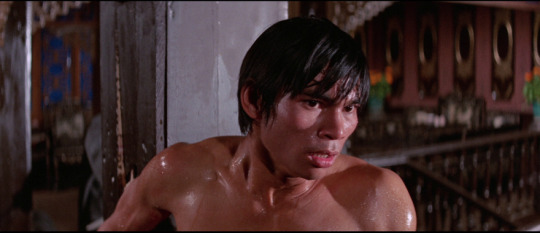
Films Watched in 2022:
#97. The Boxer from Shantung (1972, Chang)
1st viewing
0 notes
Photo

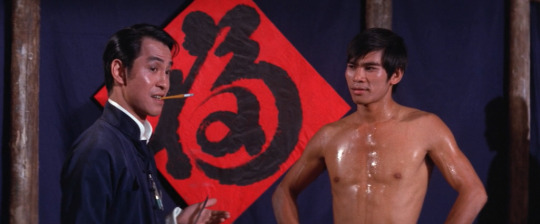
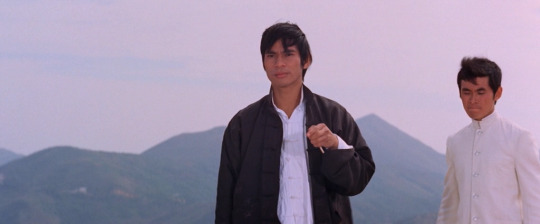
Chen Kuan-tai in The Boxer from Shantung (1972)
3 notes
·
View notes
Photo
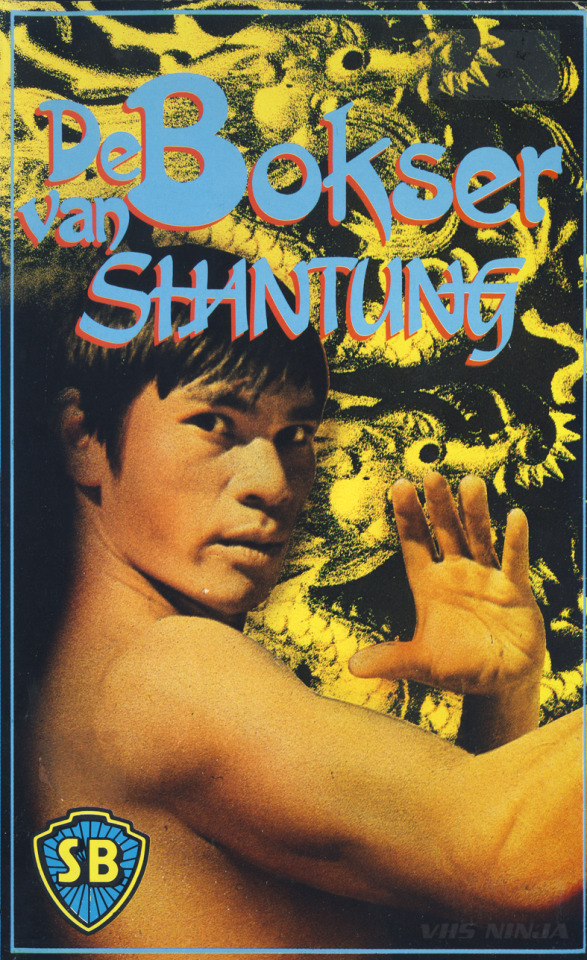
The Boxer from Shantung (1972)
#The Boxer from Shantung#Ma Yong Zhen#Cheh Chang#Hsueh Li Pao#Kuan Tai Chen#Wang Qing#David Chiang#1972#kung fu#VHS#Shaw brothers#Video Screen
21 notes
·
View notes
Text
Preview- Shawscope Volume 1 (Limited Edition Bluray Box Set)
Preview- Shawscope Volume 1 (Limited Edition Bluray Box Set)
After an undisputed reign at the peak of Hong Kong’s film industry in the 1960s, Shaw Brothers (the studio founded by real-life brothers Run Run and Runme Shaw) found their dominance challenged by up-and-coming rivals in the early 1970s. They swiftly responded by producing hundreds of the most iconic action films ever made, revolutionising the genre through the backbreaking work of top-shelf…

View On WordPress
#Challenge of the Masters#Chinatown Kid#Chris Malbon#Crippled Avengers#Darren Wheeling#Dirty Ho#Executioners From Shaolin#Five Shaolin Masters#Heroes of the East#Ilan Sheady#Jacob Phillips#Jolyon Yates#King Boxer#Matthew Griffin#Mighty Peking Man#Shaolin Temple#Shaw Brothers#The Boxer from Shantung#The Five Venoms#Tony Stella
0 notes
Photo

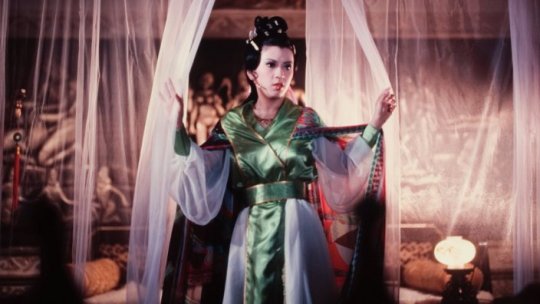
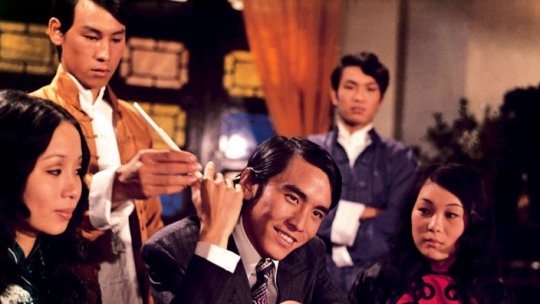

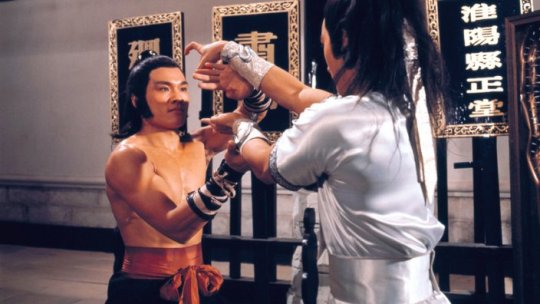
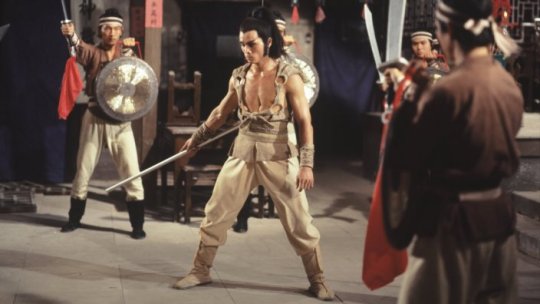

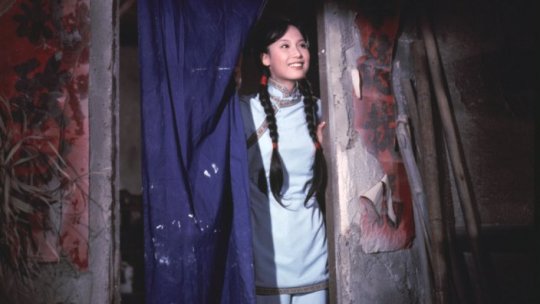
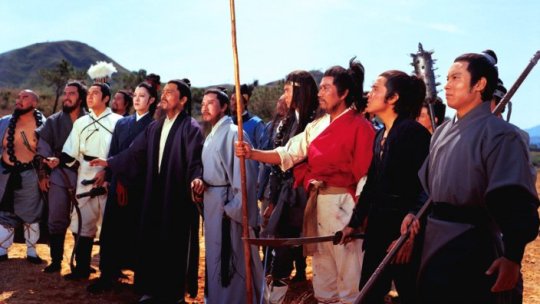
(via 10 classic early Kung Fu movies you can stream right now | Movie News | SBS Movies)
#old school kung fu#shaw brothers#return to the 36th chamber#bloody parrot#boxer from shantung#five shaolin masters#the five venoms#crippled avengers#invincible shaolin#shaolin martial arts#the water margin
1 note
·
View note
Text
Reflecting on Bruce Lee's Films
I recently finished watching all of the five films that Bruce Lee starred in. I'm yet to watch The Green Hornet or any of his earlier works, and the David Carradine-led show inspired by Lee's ideas called "Kung Fu," turned me off when I gave it a try. I think it's fair to look at his five starring roles as representative of his body of work. Spoilers ahead in case you haven't seen any of these. Below, I will be talking about "The Big Boss" (1971), "Fist of Fury" (1972), "Way of the Dragon" (1972), "Enter the Dragon" (1973), and "Game of Death" (1978).
I would say that "Enter the Dragon" is the best one. If you are only going to watch one Bruce Lee movie, watch that one. If you liked that a lot and then you want to see more of him, then you can check out his other movies. But if you just want to watch more good kung fu movies in general from the '70s, then I would probably suggest moving on to "Five Fingers of Death," "Five Venoms," "The 36th Chamber of Shaolin," or "Boxer from Shantung." All of Bruce Lee's movies explore the meeting between East and West, how kung fu can be taught internationally to people from around the world, his special philosophy of martial arts, and some interesting social dynamics. "Enter the Dragon" explores some questions of race, and features a multinational and multiethnic cast among whom include Lee's students.
My second favorite was "The Big Boss," his first starring role that also saved his family from a tight financial situation. This one is interesting because it features Lee playing a pretty humble, working guy who ends up standing up for his fellow workers when they are about to go on strike because their coworker went missing and the boss isn't willing to help search for his whereabouts. Bruce Lee's character ends up getting courted by the bosses as a middle man between management and the workers, but he soon finds that they are using him, and he loses the respect of the workers in the process. While all of this is going on, the ice factory that Lee works in is secretly running engaging in human and drug trafficking. After his love interest is murdered, he goes on a rampage that is bloody and awesome for the last third of the movie. His physical prowess is impressive and in the end he gets his revenge, but is also a broken man.
At this point, I am split between "Way of the Dragon" and "Game of Death." "Way of the Dragon" is one of the best explorations of East meets West in a Hong Kong martial arts movie that I've ever seen. Lee plays a charming Charlie Chaplin-esque character who travels from Hong Kong to visit his immigrant relatives in Rome, Italy. His observations and humorous interactions with the Europeans around him are a delight and, I think, come from a place of both personal experience and intelligent ironic joking. The fighting in this movie is top notch. "Game of Death" is amazing for several reasons. There is so much about this movie that is great, but there is also so much about it that is terrible. The entire idea of putting together this movie and releasing it 5 years after Bruce Lee’s death is a terrible one. The idea of using two stunt doubles to pretend to be Lee for 70% of the movie is terrible. The cutaways to old shots of Bruce Lee in other films are terrible. And most of all, the inclusion of actual real-life footage of Bruce Lee’s real funeral is absolutely terrible. Now all that being said, the story of the movie on its own, is actually pretty good. I was entertained and interested in the plot the whole time. The idea of a movie star being killed by the mob and then getting revenge on them after faking his death is actually a really cool one. The stunt doubles did a pretty decent job of mimicking the way in which Bruce moved around and carried himself. When you see their faces, you know they're obviously not him, but from a distance it’s not too bad. It also helps that most of the time they had the doubles wearing sunglasses, bike helmets, or bandages wrapped around their heads. After watching this movie, I found the entire 35 minutes or so of uncut footage that we have anymore of Bruce acting in this movie. He basically shot three fight scenes that were supposed to happen back to back, in the last third of the movie. Only two of those were actually included, and in cut up fashion, in the end product released in 1978, and only 11 minutes of footage actually has the real Bruce on screen. The final movie minimizes the significance of the fight with Kareem Abdul-Jabbar that we get to see in the original footage. Bruce’s original script idea was genius and was the most perfect representation of his entire philosophy. The original plot had him reluctantly being forced to partake in an international martial arts gauntlet in a pagoda in Korea. After his sister is kidnapped by the Korean mob, he is forced to go partake in this competition. There is an unspecified prize at the top. There are 5 floors of challengers, each practicing a different martial arts style: Karate, Hapkido, Praying Mantis style Kung Fu, Filipino Eskrima, and finally Kareem Abdul-Jabbar who is practicing Bruce’s own style but he’s 7’4”. That is the final fight in the original story, but in the final movie it is second to last, which lessens its significance, again. After the final fight, Bruce is beaten, bloody, tired, and unable to walk straight. He just walks down the steps and doesn’t even bother to go up to the top. Whatever is up there is not important to him. Now tell me that isn’t an amazing idea for a martial arts movie, made by a guy who specifically emphasized that one should fluidly adapt different fighting styles? In every fight, he finds each style’s weakness and uses that to win. This shows his belief that being too rigidly traditionalist about one style was not the best approach. The barrage of Bruce Lee clones and recuts after this movie are an insult to him, but also are an interesting snapshot of the bizarre pop culture world at the time. Fortunately Hong Kongers were not interested at that point and had already moved on to other great martial arts stars like Jackie Chan, Gordon Liu, and Sammo Hung.
Finally, I place "Fist of Fury" last. My favorite part of it is when Bruce Lee keeps putting on different costumes and making funny faces disguised as different people. It's sequel is atrocious.
After watching all of these movies, I want to say that my overall verdict is that Bruce Lee absolutely deserves the reputation he has. It is sometimes said that after a star dies young, their work becomes overrated and that they are only that famous because of their tragic real-life story. I think that in the case of Bruce Lee, this is not true. He really was that exceptional. His philosophy, his charisma, his fighting style, and his visions for his films were all superb, above and beyond the norm.
3 notes
·
View notes
Note
also! somehow your gorgeous gifsets escaped my notice before?? so I'm adding some of those movies to my watchlist. is there one you'd recommend for me to start with (gifset or not)? I've mostly just watch some bruce lee stuff so far, if that helps any thxxx
Wow thank you so much I really appreciate that you took the time to message! Phew I got tonnes of recs but I’ll keep it short and not deranged LMFAO
Personally, my faves are the early Chang Cheh films because they are very melodramatic and violent. I am obsessed with his obsession with death and the male body (which is what my lecture would be about lmfao). But good ones to start with are Vengeance and the Duel, but also the One-armed Swordsman, the Boxer from Shantung, Have Sword Will Travel and Blood Brothers. (sidenote: his death obsession peaks with the New One-armed Swordsman and the Heroic Ones)
In terms of like pure martial arts, Lau Kar-Leung is the legendary director and two high-points of the genre are: the 36th Chamber of Shaolin and Eight Diagram Pole Fighter, which are both incredible! But I also like Spiritual Boxer (Ti Lung in the beginning 👀👀) and Lady is the Boss. So they would be a good place to start!
Also of course; Jackie Chan’s Police Story I & II and Project A I & II are awe inspiring!
#sorry you asked for one#ngl i actually have been collating all my chapters and pdfs bc i do genuinely want to write about martial arts movies LOL#sorry to my degree i am only enrolled to have access to all the databases#thank you so much
2 notes
·
View notes
Text

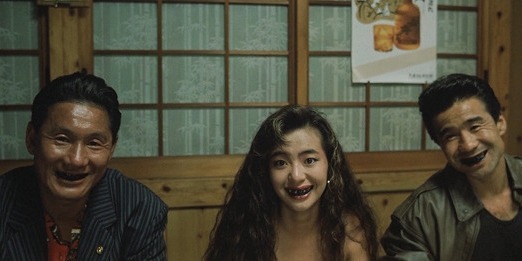

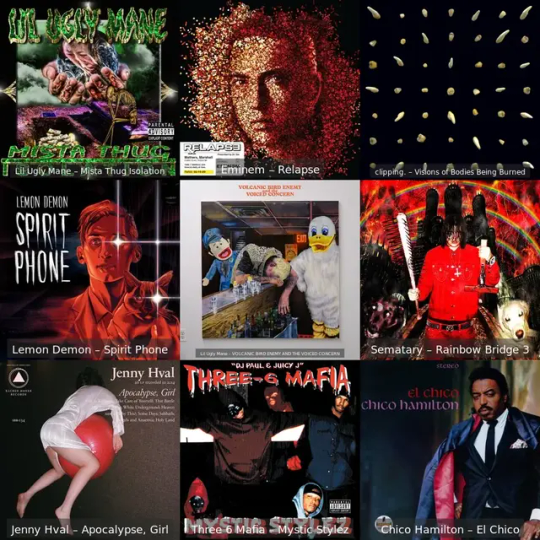
Weekly Wrap Up
The Boxer from Shantung / All Under the Moon / Rebel Moon - Part One: A Child of Fire / Boiling Point / Gonin / Lastfm
Last.fm / Letterboxd
0 notes
Text
Terms of the Treaty of Versailles
June 28 1919, Versailles--After more than five months of negotiations, the terms of the peace treaty with Germany had been signed by Germany and (almost) all the Allies.
The first article of the Treaty was dedicated to the League of Nations, which Wilson saw as its most important feature. Initial members of the League would be all the Allied signatories of the treaty, as well as most neutral countries. Not initially invited were the defeated Central Powers (including Hungary), as well as Mexico, Costa Rica, the Dominican Republic, Luxembourg, Albania, Ethiopia, or any part of the former Russian Empire (including Finland).
The League’s overall structure was largely similar to the later United Nations’; an Assembly with one vote per country, and a Council with the Big Five (the UK, the US, France, Italy, and Japan) as permanent members and four other members chosen by the Assembly (to begin with, Belgium, Brazil, Spain, and Greece). Decisions, by default, had to be unanimous; like with the UN, this gave the permanent members veto power, but it also gave it to the temporary members as well, and to any country for matters to be considered by the Assembly; this would prove to be a problem in the decades to come. The League would be headquartered in Geneva.
The Council was charged to formulate plans for arms reductions. League members would "undertake to respect and preserve as against external aggression the territorial integrity and existing political independence of all Members...the Council shall advise upon the means by which this obligation shall be fulfilled." Disputes between members were to be submitted to inquiry by the Council or arbitration, rather than war. If war should occur anyway, it would be considered an act of war against all other League members, resulting in (at least) an embargo and blockade against that country; the Council would recommend what forces countries would contribute in any military effort.
German colonies, as well as Ottoman territory in the Middle East, would officially fall under the auspices of the League. However, the day-to-day governance would fall to one of the Allied powers, holding a mandate over them on behalf of the League. The degree to which the local population was to have any say in their self-determination would vary; more so in the Middle East, less so in Central Africa, and very little in Southwest Africa [Namibia] (which South Africa effectively annexed) and in Germany’s former colonies in the Pacific.
Additionally, League members were to endeavor to “maintain fair and humane conditions of labour,” ensure “just treatment” of their colonial subjects, help to prevent and control the spread of disease, and “secure and maintain freedom of communications and transit and equitable treatment for the commerce of all Members.” Furthermore, the League was to supervise agreements against drug and human trafficking, to regulate arms trading, and the Council was to draw up plans for arms reduction.
The rest of the treaty dealt with Germany more directly. Alsace-Lorraine was to be returned to France. A large swath of territory was to be given to Poland in the east (cutting off East Prussia except by sea), and small regions were awarded to Belgium and Czechoslovakia. A plebiscite would be held in northern Schleswig, in areas annexed by Prussia in 1864, to decide whether the region would rejoin Denmark or stay with Germany; if it decided to rejoin Denmark, another plebiscite would be held in southern Schleswig. Three other plebiscites (two in East Prussia and one in Upper Silesia) would be held in territories disputed between Germany and Poland. Danzig would become a free city; while it would govern itself, Poland would have free use and service of its port, and full control of its railroads, waterways, and communications. The territory around Memel, near Lithuania, was to be handed over to the Allies, who would determine its final disposition.
France was to receive ownership of the coal mines in the Saar basin. The Saarland itself would be under League control, and in 1934 would hold a plebiscite on whether to join France, join Germany, or continue under League administration indefinitely. If it chose to join Germany, Germany would have to buy the mines back from France in gold within a year. Luxembourg would exit the German customs union.
Germany was prohibited from building, mobilizing, or maintaining any military forces, fortifications, or infrastructure west of the Rhine or 50 km to the east of it. Doing so would be considered a “hostile act...calculated to disturb the peace of the world.” All already-existing fortifications in that area were to be dismantled. Additionally, fortifications and harbors on Heligoland and Dune (in the North Sea) are to be destroyed, and Germany will dismantle all fortifications on her Western Baltic coast, to ensure that she cannot disrupt the free passage of trade there. Germany is to allow all countries’ ships, civilian or military, passage through the Kiel Canal on equal terms.
Germany was to respect Austrian independence unless the League Council said otherwise. Germany was to completely repudiate the treaties of Brest-Litovsk and Bucharest that it had signed with Russia, Ukraine, and Romania the previous year.
All German colonies would be handed over to the Allies, who would determine their final disposition as mandates under the League of Nations. Japan would receive the German concession in Shantung (around Tsingtao); all China would receive is an end to the indemnity payments owed Germany due to the Boxer Rebellion, and a return of the German concessions in Hankow [now part of Wuhan] and Tientsin [Tianjin]. It is little surprise China refused to sign the treaty.
The German army was to be reduced to no more than 100000 men and 4000 officers, with civilian support staff no more than a tenth of pre-war levels. There would be no conscription and no system of mobilization. Military missions could not be sent abroad. The treaty also made attempts to prevent paramilitary organizations: “associations of every description...must not occupy themselves with any military matters.” This proved exceedingly difficult to enforce. Severe limits were placed on stores of munitions and ammunition; any manufacture thereof would have to be approved by the Big Five. Import of any war materiel was prohibited. Germany was forbidden to have any chemical weapons, and would disclose the full details of their wartime chemical weapons program to the Allies. The manufacture or import of armored cars or tanks was prohibited. After October 1, 1919, Germany could not have any military air force whatsoever.
German troops in the Baltic were to be returned to Germany when the Allies deemed it fit; in the meantime, they were not to interfere with the Baltic states’ defense nor seize supplies to send back to Germany.
The German Navy would be reduced to no more than 6 pre-dreadnought battleships, 6 light cruisers, 12 destroyers, and 12 torpedo boats--no submarines, no battlecruisers, and no dreadnoughts. Any ships beyond this number were to be handed over to the Allies or scrapped. The Navy could consist of no more than 15000 men. Any German ships outside of Germany now no longer belonged to Germany; since the scuttling of the High Seas Fleet at Scapa Flow, however, there were far fewer ships in this category than anticipated. Germany would sweep all the mines in the North Sea east of 4° E.
All remaining prisoners of war and interned civilians (by this time, mostly German) were to be repatriated “with the greatest rapidity;” the French and British ultimately had different ideas as to what that phrase meant, and many would not be returned from France until 1920. Some prisoners who had been kept in Siberia would not be returned until after the end of Allied intervention there in 1922.
The Allies were to hold military tribunals to try Kaiser Wilhelm II and other German war criminals. These provisions were largely moot, however; the Netherlands refused to extradite the Kaiser, and the Allies did not really attempt to make Germany extradite other war criminals. A few were tried in Germany; fewer were convicted; none served more than a few days of their sentence.
As justifications for war reparations, “Germany accepts the responsibility of Germany and her allies for causing all the loss and damage to which the Allied and Associated Governments and their nationals have been subjected as a consequence of the war imposed upon them by the aggression of Germany and her allies.” Germany was to compensate the Allies for all the damage done to the Allied civilian population and property, for Belgium’s war loans (including interest), pensions to disabled veterans and their dependents, wartime payments to relatives of mobilized soldiers, and any expenses relating to the occupation of the Rhineland. The amount to be paid was not specified in the treaty, but was to be determined by an Allied commission by May 1921; in the meantime, the Germans were to pay 20 billion marks.
General Smuts signed the treaty on behalf of South Africa, but left an official note in protest of the harsh reparations terms--this despite the fact that he authored the pension-related terms.
The Germans were also to make in-kind payments of farm equipment, animals, and merchant ships, to replace wartime losses. Additionally, Germany was to provide large amounts of coal and chemicals to France, Belgium, Italy, and Luxembourg. Louvain’s library was to be replenished with works from Germany. Loot seized during the Franco-Prussian war was to be returned (though many French battle flags were burned in Germany in the days before the signing of the treaty, to the consternation of the French). The control of most German submarine cables was to be given to the Allies.
The payment terms (though not technically the overall sum) could be modified based on Germany’s ability to pay. Germany would also receive credit for the in-kind payments, as well as property lost due to Germany’s border changes (Alsace-Lorraine excepting).
Germany was not to impose higher customs duties on the Allies than they would on any other country. Germany was to take action against counterfeit goods, and recognize “regional appellation” of wine and spirits. In other words, the Treaty of Versailles codified that Champagne refers only to sparkling wine from Champagne. The Elbe, Oder, Niemen, and Danube were made international rivers; Czechoslovakia was to be given 99-year leases for free zones in Hamburg and Stettin to give that country some form of access to the sea.
The occupation of the Rhineland and three bridgeheads across the Rhine would continue to ensure German cooperation with the terms of the treaty. The northern region would be evacuated after five years, the central after ten, and the southern after fifteen; these could be extended if “the guarantees against unprovoked aggression by Germany are not considered sufficient.”
Sources include: Margaret MacMillan, Paris 1919.
#wwi#ww1 centenary#ww1 history#world war 1#world war i#world war one#The First World War#peace terms#Treaty of Versailles#The Great War#june 1919
32 notes
·
View notes
Text
[Double Impact] 'The Boxer From Shantung' (1972)
[Double Impact] 'The Boxer From Shantung' (1972)
http://filmexodus.com/double-impact-the-boxer-from-shantung-1972/
#BasementBros, #KungFu, #TheBoxerOfShantung
2 notes
·
View notes
Photo
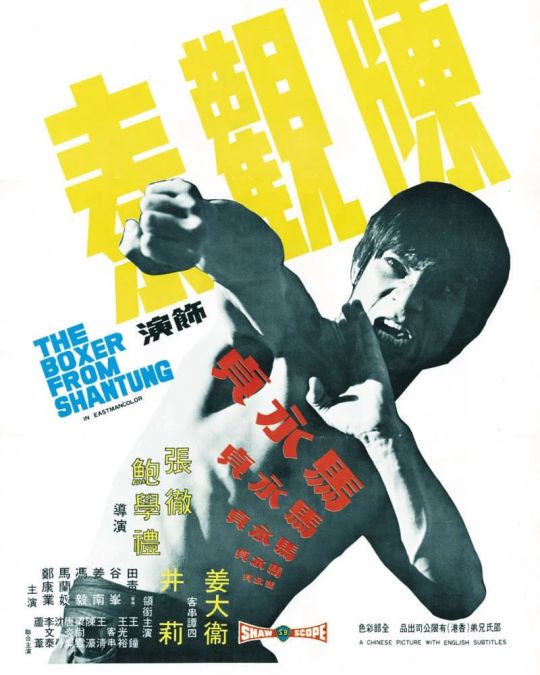
The Boxer from Shantung Where is this wonderful world where every conflict is solved with a swift kick to the face? There are no debates. Words will not save you here. Punches are a universal language. Martial arts are basically poetry. This is the motivation I need to get back on track for my fight with God. This Shaw Brothers outing is essentially Goodfellas with Kung-fu. Brother Ma comes to Shanghai with nothing in his pockets but his will to work his way up through sheer perseverance and an iron fist. Ma refuses to forget where he came from while ascending through the ranks of the criminal underworld. But will power lead to corruption? Will Ma become just like the people he replaced, taking advantage of the very people that allowed him to rise? Who cares cause the climax of this film is FUCKING INSANE! Well, I actually do care cuz while this final fight is absolutely unforgettable, its all the build up that makes it worth it. Its a strong cautionary tale about strength and power which is the exact thing I need to keep in mind as I myself get more powerful. If I'm to become strong enough to fight God then I mustn't become guilty of the very thing I'm fighting against. I am the people's champion. I will not fail you. https://www.instagram.com/p/CasguMJFaPg/?utm_medium=tumblr
0 notes
